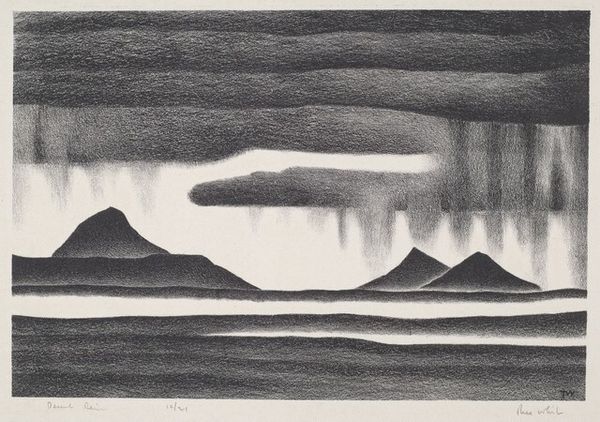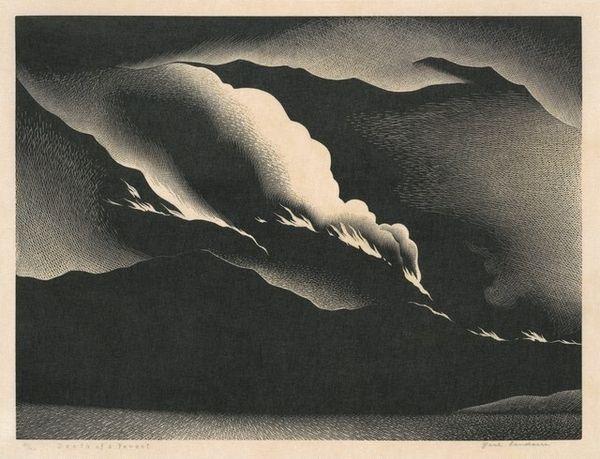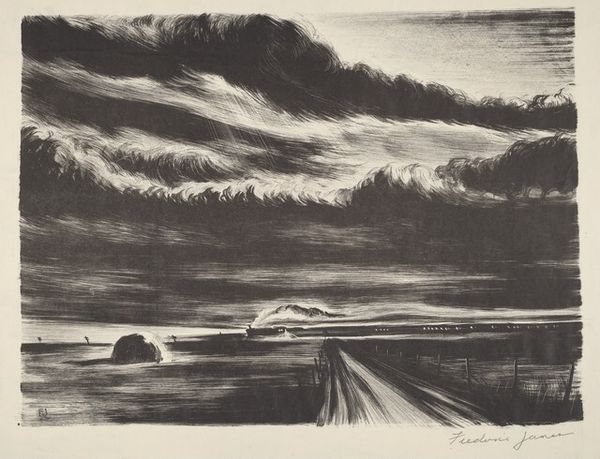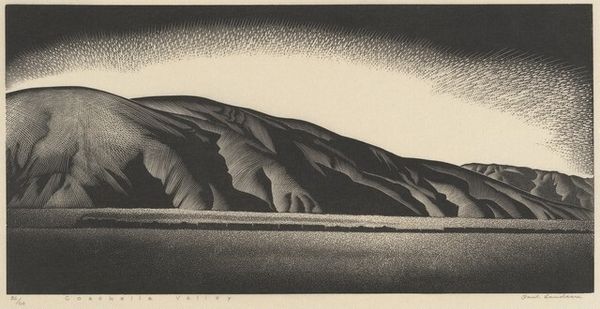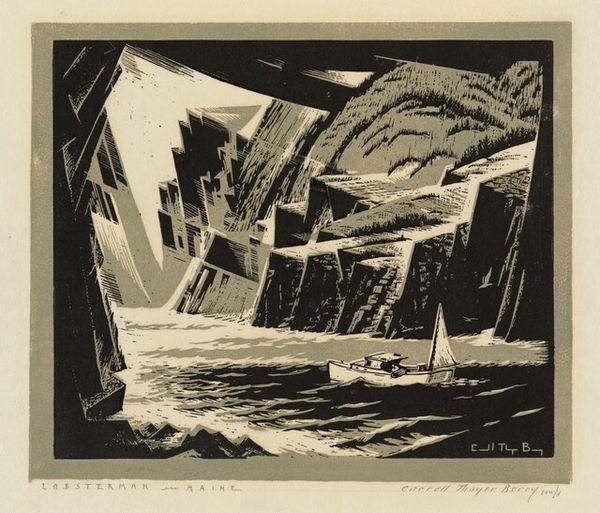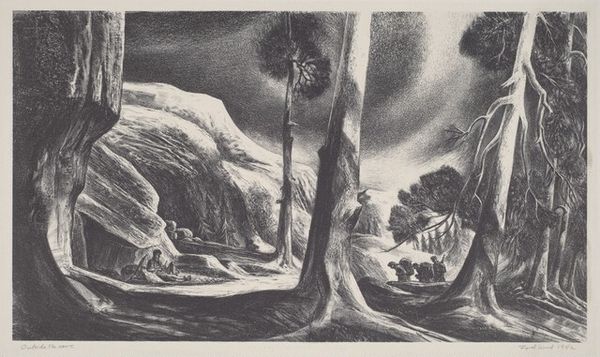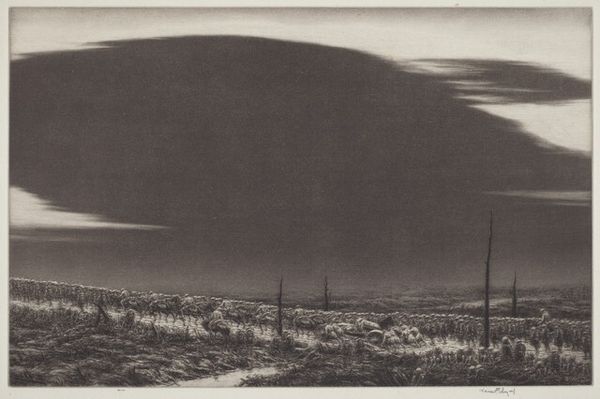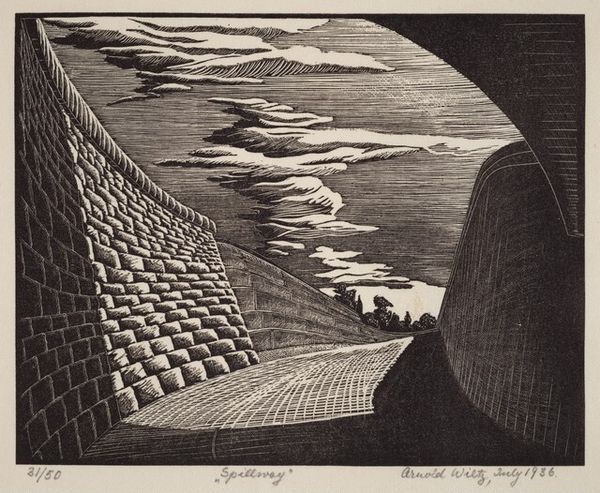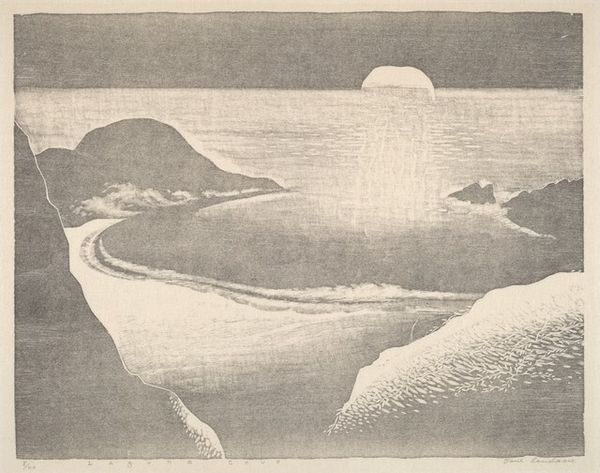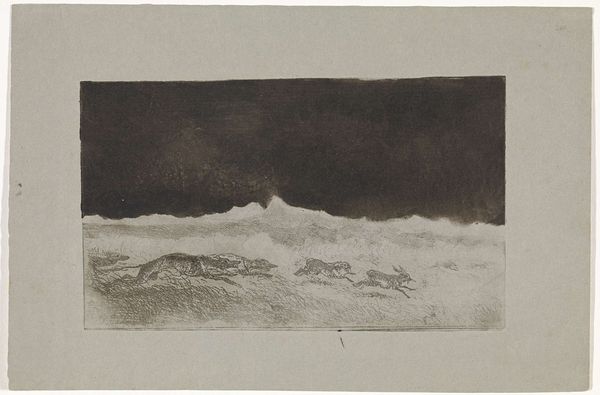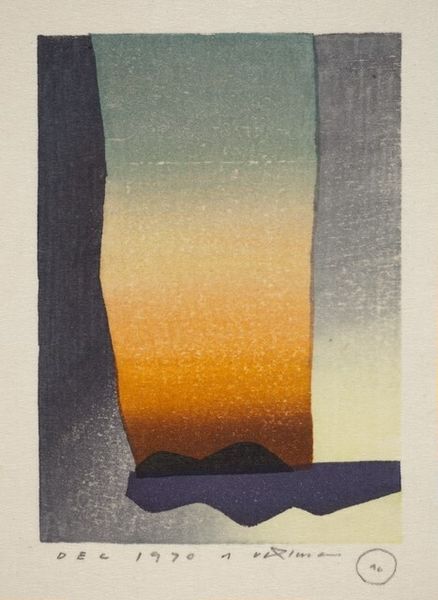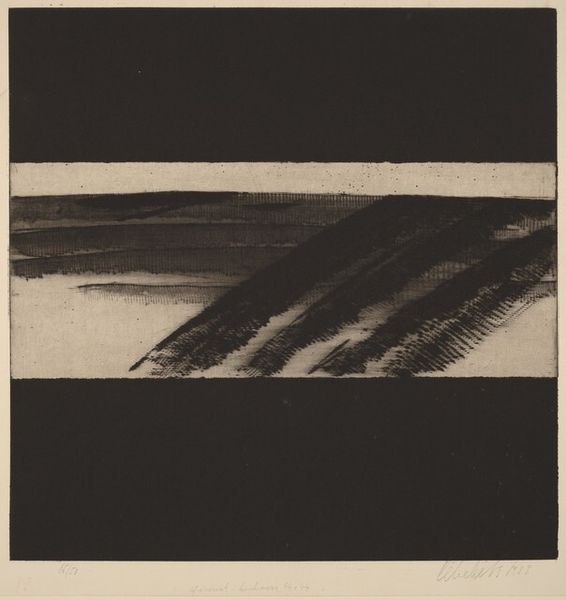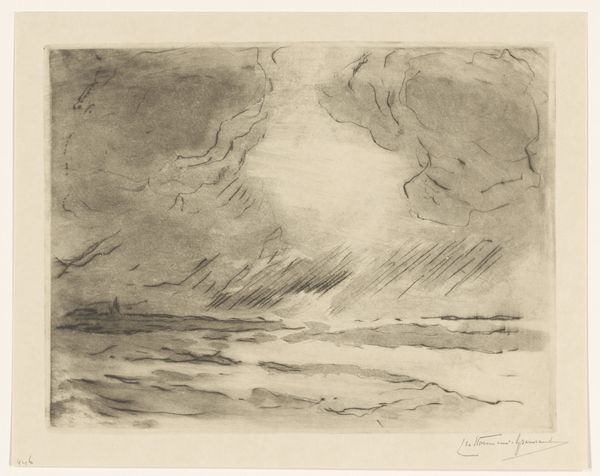
drawing, print, pencil
#
pencil drawn
#
drawing
# print
#
pencil sketch
#
landscape
#
pencil drawing
#
geometric
#
pencil
#
regionalism
Copyright: National Gallery of Art: CC0 1.0
Curator: Immediately striking, isn’t it? A bit ominous, even. That heavy sky and those very graphic columns of rain... it feels like a stage set. Editor: Yes, there is a dramatic quality. This is Arnold Rönnebeck's "Rain Over Desert Mesas," a pencil print created in 1931. Rönnebeck was deeply engaged in portraying the American Southwest, and this work aligns with the Regionalism movement. Curator: It’s fascinating to see how Rönnebeck, working within this Regionalist vein, uses geometry almost brutally here. Those mesas are reduced to almost child-like geometric forms and look so at odds with the detail given to those dark rainclouds. He almost weaponizes landscape itself. I'm reminded of discussions around environmental justice; thinking about how land bears witness to power dynamics, especially during the Depression era. Editor: The formal austerity really reinforces that sense of isolation and perhaps even vulnerability. This was the early Depression, after all, a period of massive social upheaval. I wonder, though, if this aesthetic served not just to depict hardship but also to monumentalize the landscape in a way that bolstered regional pride during economic insecurity? Rönnebeck exhibited widely in this period; images like this one undoubtedly circulated and shaped perceptions of the Southwest. Curator: Definitely a crucial point to think about how these images were circulated. I feel this image could be a powerful visualization of ecological anxiety. The clean simplicity of the rendering serves to highlight an ideal being disrupted. The composition almost prefigures climate anxiety… and how nature is not as “forever” as we hoped for. Editor: Absolutely. The print’s deliberate simplicity invites us to consider the narratives it perpetuates and the audiences it addressed. Understanding how those depictions shaped the identity and image of the American Southwest is essential to interpreting works such as Rönnebeck’s, regardless of if we read it as an omen or as pride. Curator: This artwork seems to me like such a poignant lens through which to view contemporary conversations around climate, representation, and the politics of place. It really does give us all a new, deeper understanding, don't you think? Editor: I agree entirely. It’s rewarding to delve into the multifaceted interpretations and the lasting impact of Rönnebeck's art on American cultural identity.
Comments
No comments
Be the first to comment and join the conversation on the ultimate creative platform.
